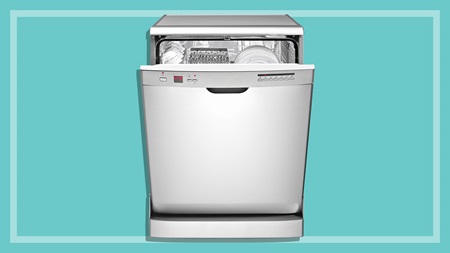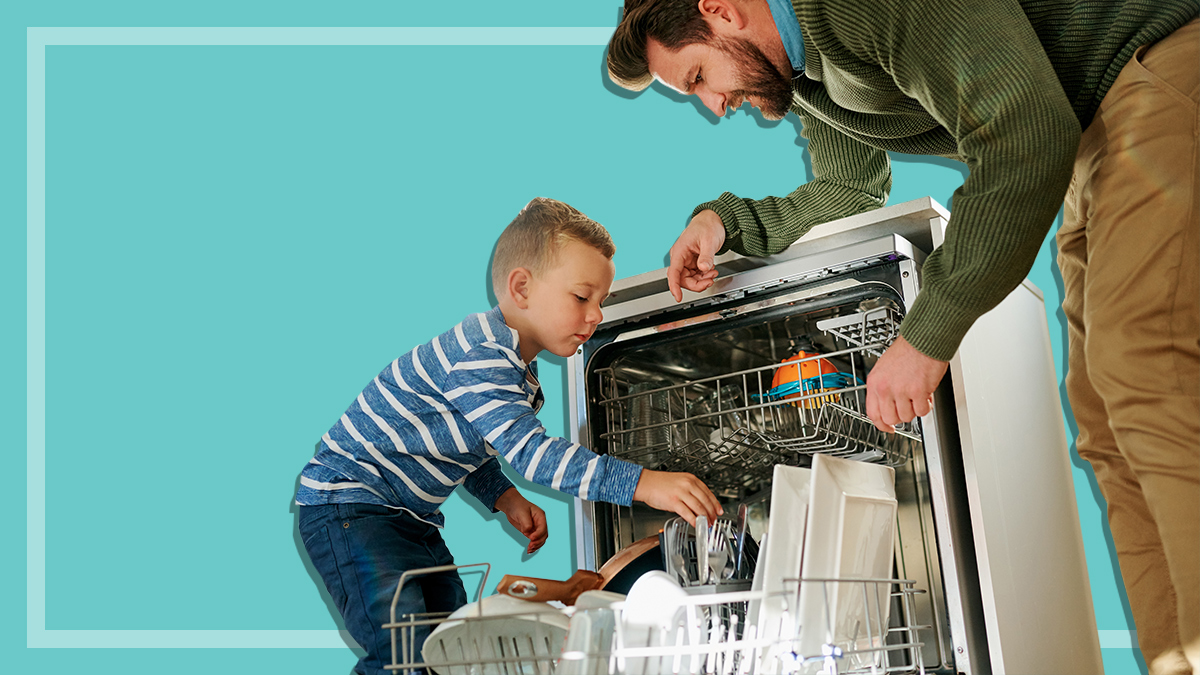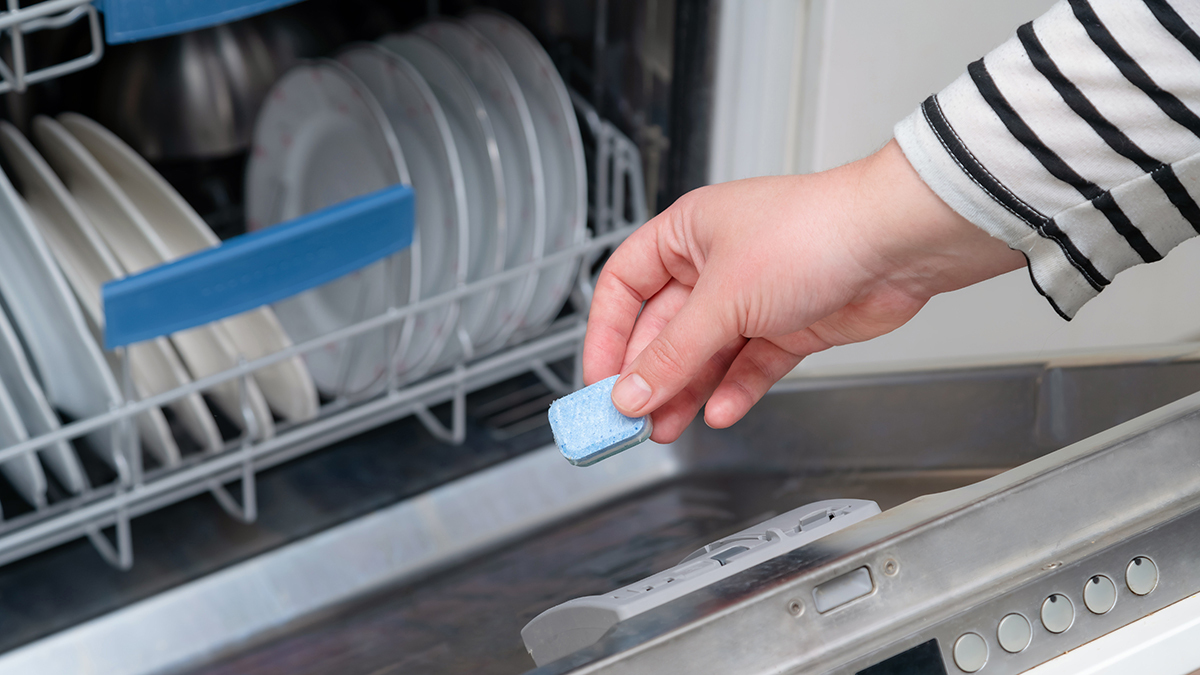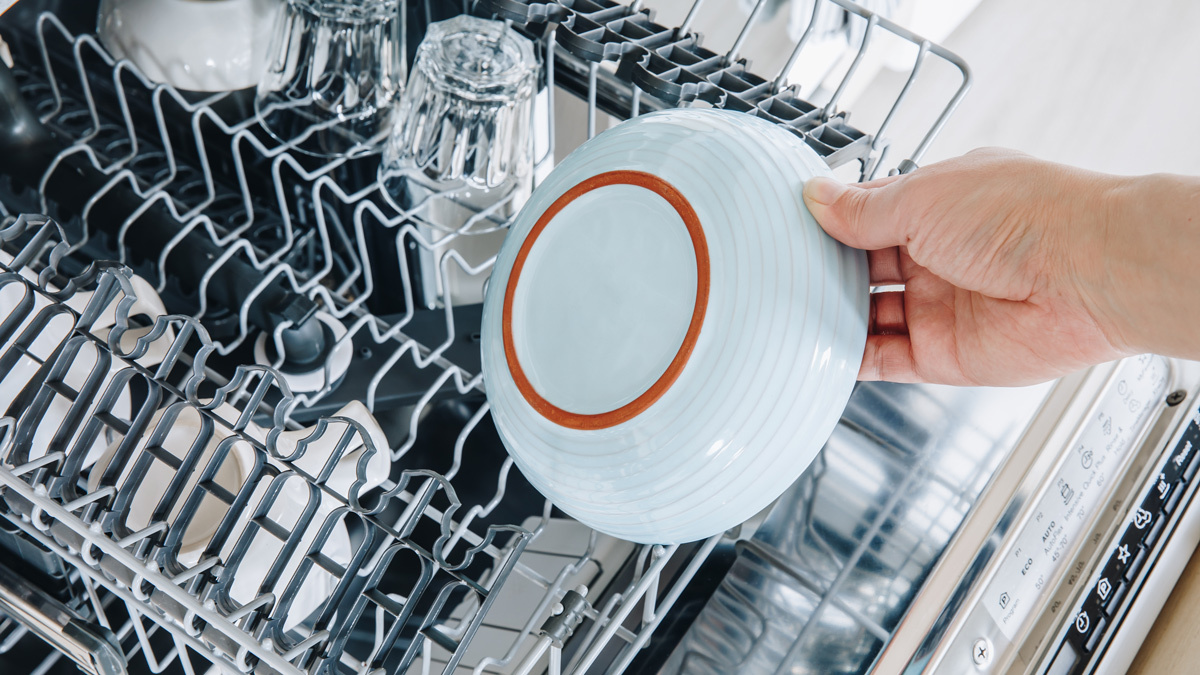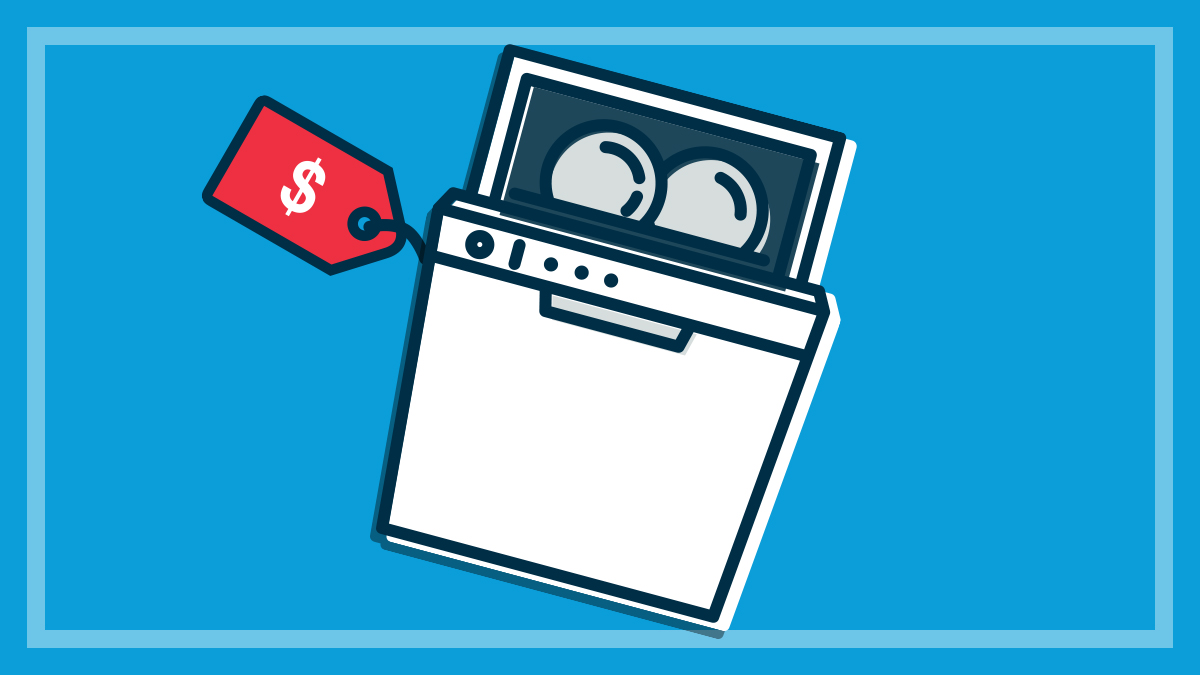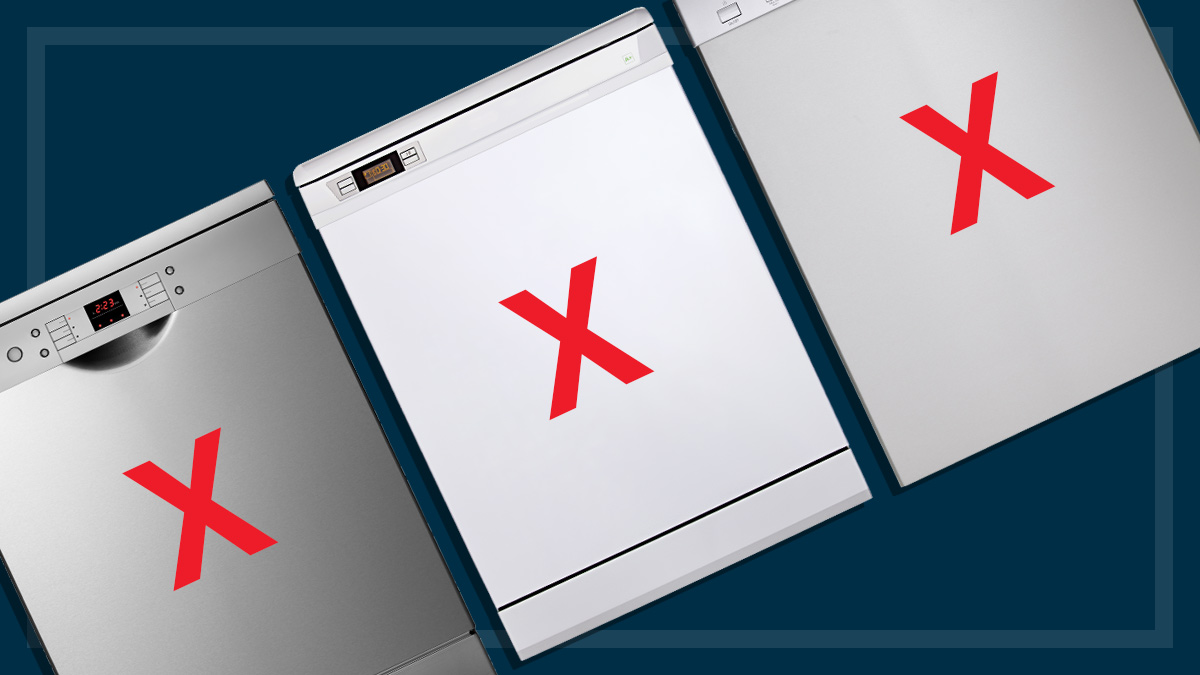Get our independent lab tests, expert reviews and honest advice.
How to unclog and drain a dishwasher
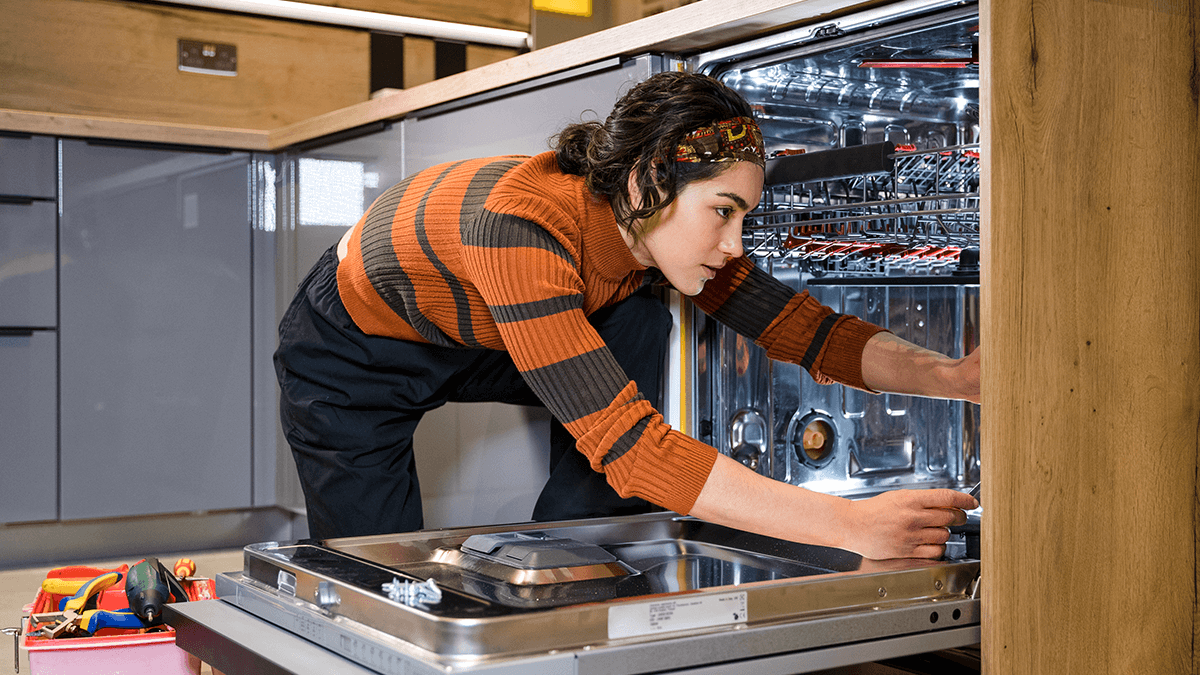
One of the most common dishwasher problems is when it won’t drain. Opening the door to a swampy soup of detergent and food particles can be annoying, but ick factor aside, it’s usually an easy (and fast) fix.
In fact, sometimes it just takes the dishwasher equivalent of turning it off and back on again. Many dishwashers have a reset feature which ends the cycle and pumps out the residual water. Check your manual for how this works on your model and give it a try – it might solve your problem. If not, then you’ll need to roll up your sleeves and drain the water out by hand.
Easy steps for draining a clogged dishwasher
1. Prepare the dishwasher
Get ready to drain your dishwasher by first removing any dishes as well as all the dish racks. Then turn the dishwasher off and unplug it. Put some towels or newspaper around the dishwasher to catch any spills.
2. Remove the water
Start bailing out the dishwasher sump (the part that collects water for the pump) into the sink or a bucket with a scoop or cup. If you have a wet/dry vac then that’s even better. Once scooping becomes ineffective, soak up the last of the water with an old towel. You don’t need it bone-dry, just dry enough that food particles aren’t going to wash deeper into the bowels of your dishwasher when you pull out the filter.
3. Clean the filter to ensure debris isn’t stopping the water flow
If you’ve just neglected to keep your filter clean (you should clean it out every month or so as part of regular maintenance), it might be blocked with grease and food scraps. You’ll find the filter at the bottommost point of the tub. Take it out (check your manual if you’re not sure how) and scrub it thoroughly with hot, soapy water using a sponge or soft bristle brush. Before replacing the filter, clear any chunks of food or other nasties from the sump or drain under the filter, then reinstall the filter.
You may want to try your luck running a short cycle at this point to see if it’s fixed the problem.
4. Try using a mixture of bicarbonate of soda and vinegar
Just like a clogged bathroom sink, sometimes a mixture of bicarbonate of soda and vinegar might be just enough to dissolve the blockage. Mix a 1:1 ratio of bicarb and vinegar, pour it into the bottom of the tub and leave it to work for about 20 minutes. If the standing water starts to drain then run a hot cycle to help loosen and flush away any remaining clogs or debris. If that doesn’t work, move on to the next step.
CHOICE tip: Avoid using drain cleaner as the harsh chemicals can damage your dishwasher’s delicate innards.
5. Check the drain hose for kinks and blockages
The drain hose connects your dishwasher to the plumbing under your sink. You should be able to see most of it by looking in your kitchen cupboard, but you may need to take off the dishwasher’s kick-panel, or remove the dishwasher from your cabinetry to access it in its entirety.
If the hose isn’t kinked then there may be a blockage. Disconnect the hose from the drain and feel for and clear any blockages with an old coat hanger or long, flexible brush or pipe cleaner, then reattach it, taking care not to kink the hose again in the process. If the hose or connectors are damaged or badly kinked, you may need to replace them. Finally, inspect the drain valve at the bottom of the machine to ensure it moves freely.
Run an empty cycle to see if your dishwasher is now draining normally. Remember to regularly clean and maintain your dishwasher’s filter to prevent the issue from happening again, and although you don’t need to pre-rinse your plates, scrape any solids into the bin before racking them.
CHOICE tip: Running a vinegar cycle or commercial dishwasher cleaner every now and again can keep your machine fresh and sparkling (just check your manual first in case the manufacturer warns against using vinegar). This is especially helpful if your dishwasher is prone to limescale build-up or foul odours.
Dishwasher still not draining properly?
If you’ve followed the steps above and your dishwasher is still not draining properly, you might want to have it checked out by an experienced tradesperson or contact your manufacturer for more advice.
Repair technicians aren’t cheap, however, so consider the age of your dishwasher first. If it’s relatively new, then you may be able to have it repaired or replaced under warranty. Conversely, if your dishwasher’s getting on in years, and if it seems like a major (read: expensive) repair is needed, it might be time to consider a replacement.
Sure, a repair might be cheaper, but there could be other components approaching the end of their life. A whole new appliance, with the better performance and efficiency that modern technology can offer, might be a better option.
How to drain a dishwasher if you’re moving house
A dishwasher is usually considered a ‘fixture’ when a house is sold (or rented), particularly if it’s integrated into your kitchen, which means you may not be able to take it with you when you move. However, if you do plan to move it, then you’ll have to make sure you prepare it adequately for transport so you don’t do it any damage.
If you’re transporting a dishwasher, it’s important to clean, disconnect and drain it well, following steps 1 and 2 above. Then secure the door and wrap the whole machine in bubble wrap or a blanket to limit damage when it’s being moved.

